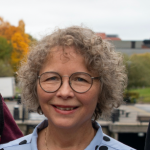
Research objectives and findings
The FUTURED project was conducted in wake of a 2017 teacher education reform in Norway. A fundamental assumption for this reform is the need of a ‘practice turn’, and the view that university-school collaborations are essential for teacher education quality (Murray, 2016). Official Norwegian educational strategies are increasingly highlighting partnerships (Norwegian Ministry of Education and Research, 2018) and pre-service teachers’ participation in such collaborations (Advisory Panel for Teacher Education, 2020). On a philosophical level, we consider the imperative of encountering others critical to learn to live with difference, both for the individual’s emergence as a unique subject (Biesta, 2013, s. 87) as well as for triggering tensions and change. Interaction between schools, teachers, preservice music teachers (PMTs), pupils and the “outside world” is thus essential. Such interaction could be physical, for example when external agents such as musicians are brought into educational spaces to collaborate with teachers and pupils (Christophersen & Kenny, 2018). Such interactions could also be virtual and/or digital. New media and technology could enable a broader interpretation of musicianship in the classroom (Havre et al, 2019) as well as provide opportunities for students to musically interact and be confronted with “others”, for example in gaming, online musicians’ fora, internet-based bands, etc.
Drawing on collaborative action research within primary and lower secondary school music classrooms, the sub-studies in this work package have explored how multi-professional collaborative teaching can be developed in schools, and how digital tools could promote interactions between music classrooms and the outside world. Our research has involved the use of digital audio workstations (DAWs) and games, as well as collaboration with pupils, PMTs, teachers, and a professional musician.
Our findings suggest that the intersection of the physical and virtual opens up a hybrid space for musical participation that can draw on the PMTs and pupils’ competences, resources and preferences, and also that collaborative participation in this environment can support the pupils’ and PMTs experience of mastery. In our studies, we found that music technology devices and software contributed to the complexity of collaborative classroom activities by becoming major material agents that shaped the projects and participants’ actions and choices. These complex circumstances within the music classroom brought forth a disequilibrium and flux to which the members of the collaborative and multi-professional teaching team responded in different ways. Hierarchical notions of musical expertise within the classroom were found to oppose complexity, and made it difficult for the PMTs to find their role in the music classroom and within the professional collaboration. Still, our results also suggest that the pre-service music teachers handled the complexity well, perhaps because they were already in a hybrid position, as something in-between teachers and students (Holdhus, Christophersen & Partti, 2022; Christophersen, Holdhus & Kenny, submitted)
See all FUTURED publications here
Researchers

Western Norway University of Applied Sciences
WP3 leader and researcher

Western Norway University of Applied Sciences
WP3 researcher

Western Norway University of Applied Sciences
WP3 postdoc fellow

Sibelius Academy, University of the Arts, Helsinki
WP3 guest researcher

Mary Immaculate College
WP3 guest researcher